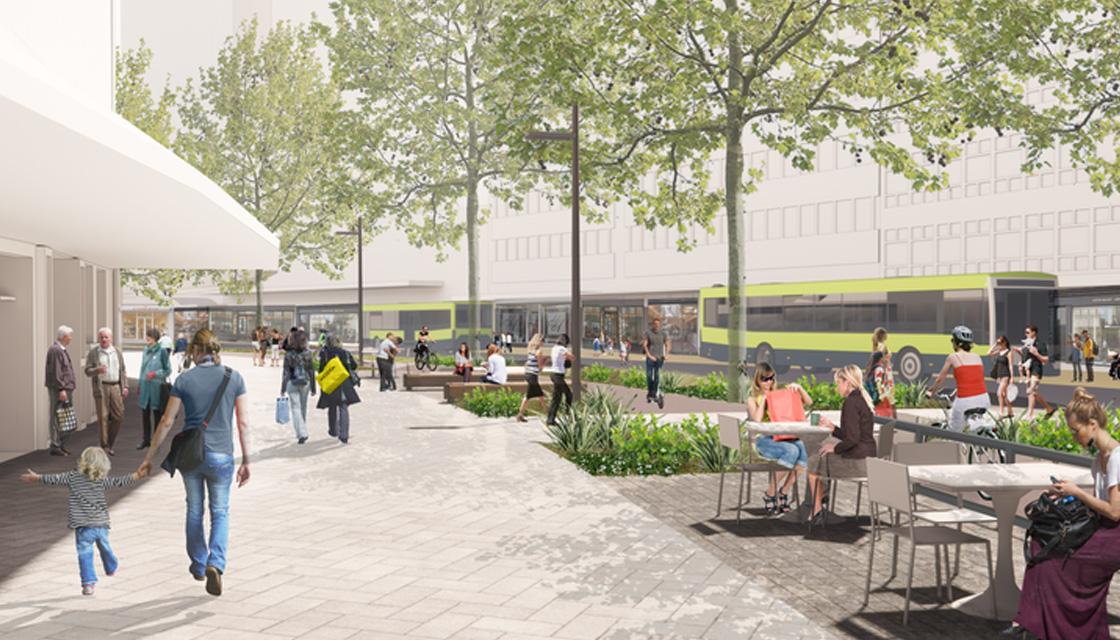Wellington is moving ahead with plans to ban cars from four main "golden mile" streets - Courtenay Place, Lambton Quay, Manners and Willis Streets.
The streets will only be open to buses, cyclists and pedestrians. Side streets will also be closed off where they intersect with them.
Car parks would be removed and footpaths widened, and Midland Park on Lambton Quay would also be expanded.

Private cars would still be allowed on Taranaki, Tory, and Victoria streets.
The plan prioritises pedestrians providing 75 percent more footpath space.
Some bus stops would be removed to ease the flow through the sector.
The retail sector and many businesses strongly opposed the plan, fearing they would lose customers and make getting stock delivered more difficult.
However, earlier consultation showed the majority of the public backed the move to ban cars.

It is part of the Let's Get Wellington Moving (LGWM) programme - a $6.4 billion transport package for the capital.
The business case will be finalised next few months before being agreed to by the councils and Waka Kotahi.
READ MORE
- Clean Car Package: Toyota New Zealand shuts down Jacinda Ardern's claim company is 'talking about bringing in EV utes'
- Julie Anne Genter, James Shaw celebrate electric vehicle victory over NZ First
- ACT's David Seymour, National's Judith Collins, Michael Woodhouse blast Govt's EV announcement
- NZ at risk for being a dumping ground for 'dirty diesels', carmaker warns
There will then be 12 months of detailed design work and consultation with the business community before it comes back again to the councils and the Transport Agency for final approval and funding.
Wellington Mayor Andy Foster said it would transform the way people used the city and he encouraged the business community to work with planners over the coming year.
He said about 22 percent of people travelled to the Golden Mile by car, and only about 3 percent of people shopping there actually parked there.

Greater Wellington Regional Council chair Daran Ponter said there was no denying there would be some pain along the way but this was a step in on the path - with the other parts of the LGWM plan - to get the city moving.
LGWM three-year programme director Siobhan Procter said the plan was to ensure the city had a vibrant and engaging environment downtown.
"[And] encourage people to move through the corridor, but we don't want them just to move through, we want them to dwell, linger, move through it slowly.
"Because if they do that, they're more likely to spend more and encourages more retail and more hospitality.
"So 35 percent of the retail spend comes from ... pedestrians, 32 percent from public transport users, and 23 percent from private vehicles [users].

She said a survey showed 48 percent of people said they would visit as often as they did now after the changes were made, and 46 percent said they would visit more often.
"So the main conclusion was that there was very little risk of any downside to retailers."
Foster said the majority of the council were enthusiastic about the plan - with only one or two not so sure.
Construction is expected to take two years - starting in late 2022 - and cost up to $79 million.
Finally progress to get Wellington moving
The wider Let's Get Wellington Moving programme aims to ease the capital's congestion woes by building rapid transit from the city to the airport, improving public transport and cycleways and easing traffic choke points on arterial routes.
It also includes plans for a second Mount Victoria tunnel.
The programme was announced in May 2019 but has been beset by delays - so far, one of the only things to have been delivered is the reduction of speed on the vast majority of inner-city streets to 30km/h.
The initial estimated total project cost was $6.4b, but Stuff reported Treasury documents released during the Budget last month warned it would likely end up costing significantly more.
Treasury said the project could need a bailout from central and local government, and the project risked not being delivered in full.
A review of the programme released this year found the project lacked leadership and was at risk of failing.
The Golden Mile that runs along Lambton Quay, Willis Street, Manners Street and Courtenay Place, is Wellington's prime employment, shopping and entertainment destination. It is the city's busiest pedestrian area and is the main bus corridor; with most of the city's core bus routes passing along all or part of the Golden Mile every day.
Let's Get Wellington Moving is a joint project between Wellington councils and Waka Kotahi, with the capital's city and regional councils funding 40 percent and the government picking up the rest of the tab.
Separately, Wellington City councillors have asked staff to explore options banning ban cars from the entire inner city by 2025.





